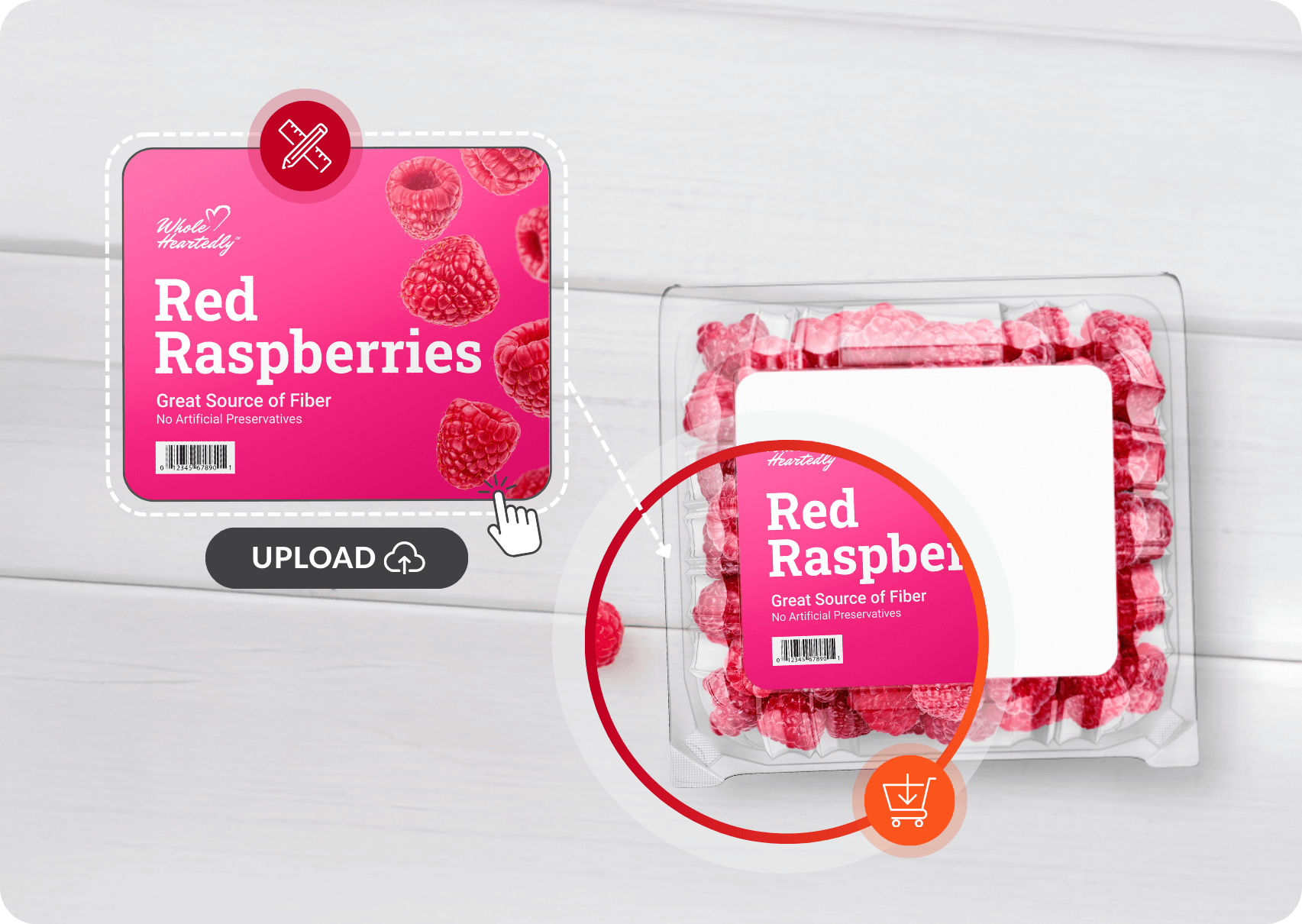Printed materials and services are one of the largest spend categories for many companies, typically falling under the label of commercial print. Each year, more than $80 billion is spent nationwide on everything from brochures and booklets to direct mail and doorhangers.
However, commercial print also happens to be one of the least talked about line items in the corporate budget — which is unfortunate. A comprehensive print management model offers companies the opportunity to significantly reduce commercial print costs year over year while also realizing a host of operational benefits.
This blog will explore the concept of print management and describe how a thoughtful print management strategy can transform commercial print into a real source of competitive advantage.

What is Print Management?
Print management is a vast topic and can take on different meanings depending on the industry or type of commercial print being supported. However, in simple terms, print management involves the strategic, centralized oversight and optimization of printing processes within an organization. Careful administration of both printing resources can streamline workflows, drive operational efficiency and bring greater control to an organization’s entire commercial print program.

The Top 5 Advantages of Print Management
Diving deeper into centralized print management as a strategy, the list of potential benefits is quite long. Generally speaking, however, those advantages fall into five overarching categories.
#1: Hard Cost Savings
First and foremost, an effective print management model can be expected to deliver hard cost savings for an organization sourcing commercial print services. These hard cost savings are derived in a variety of ways.
- Vendor consolidation — typically a key component of print management strategies — results in reduced per-unit costs for commercial print. As more print is purchased from one source, better pricing can be obtained for the simple reason that the print vendor is able to spread their overhead costs across a higher total volume of work. That pricing will likely improve year over year as the vendor realizes ongoing efficiencies of their own.
- Print management strategies open the door to parts consolidation strategies. For example, an appliance manufacturer might buy multiple types of printed durable labels without realizing that a single label specification could work perfectly for every style of appliance they manufacture. Fewer distinct parts means higher print volumes for one part, which reduces the per-unit cost even further.
- As organizations streamline and simplify their commercial print programs through print management strategies, they typically find that fewer individual deliveries of printed materials are needed. This is significant because each delivery comes with its own shipping costs factored in. Taking delivery of one full truckload a week results in lower shipping and handling costs than if multiple deliveries were received that week. The impact of shipping and logistics on the total cost of ownership of commercial print can be substantial.
#2: Soft Cost Savings
A print management strategy also creates soft cost savings. As print vendors, print shipments and printed part specifications are streamlined, administrative complexity is reduced. This simplification, in turn, eliminates a variety of tasks and responsibilities that drain time and resources from your organization:
- Contracts that must be negotiated.
- Invoices that must be processed.
- Shipments that must be tracked.
- Inventories that require planning and monitoring.
- Phone calls and emails to respond to, and so forth.
Through a comprehensive print management strategy, the administrative time and energy that goes toward sustaining a commercial print program is reduced — freeing up time for strategic, growth-oriented activities.
#3: Scalability
Organizations purchasing commercial print often find themselves in situations where they have outgrown their legacy print vendors. As the business grows over time and expands into different geographic regions, their local commercial print vendor is no longer able to deliver a competitive solution. For example:
- Poor alignment between print jobs and printing presses results in per-unit costs that are higher than market rates.
- Turnaround times are slowed by the need to ship finished materials over long distances.
- The local print vendor’s inability to continuously invest in the latest production technologies means the purchasing organization is limited to what the print vendor can comfortably produce.
- Quick-turn and abnormally large commercial print orders often cannot be accommodated, meaning the organization may miss out on opportunities in the marketplace.
A print management model — using a commercial print vendor with a nationwide, distributed print production footprint — eliminates all these issues. The nationwide commercial print vendor can scale up and down as needed, distribute print jobs to production facilities near the point of use, and ensure that print jobs are always assigned to printing technologies that result in maximum efficiency.
#4: Ordering and Inventory Technology
A lack of modern print management tools can also be problematic for companies that have outgrown their commercial print vendors. In fact, for many organizations, “print management” means placing orders by email and tracking inventory in giant spreadsheets.
Manual print management processes like these are woefully inefficient. Communication errors are common. Version control is easily lost. Money is frequently wasted on duplicate orders. Inventory levels are impossible to track accurately over time.
Commercial print vendors capable of providing bona fide print management services have digital tools that eliminate all of these problems.
- Digital asset management tools ensure strict version control of printed materials.
- Online ordering portals enable users to place print orders anytime from anywhere, with appropriate controls and permissions built in to the system.
- Inventory management is spreadsheet-free, creating a “single source of truth” that gives leaders companywide access to real-time inventory levels.
- Kitting and fulfillment is automated through profile management tools that record the exact size, style, version and quantity of print materials needed for every branch office or business location.
- All of the above, in turn, dramatically reduce waste due to obsolescence and errors.
#5: Brand Control and Consistency
Costs and operational efficiency aside, sourcing commercial print without a print management strategy in place also carries a substantial amount of risk for your brand.
- With each commercial print vendor utilized comes an element of variability in how they produce your printed materials, their ability to reproduce your signature color accurately, and so forth.
- As individual printed part specifications proliferate, variability is created in terms of paper weight, paper sheen, the type(s) of print processes used, etc. Here again, brand consistency suffers.
- These issues are exacerbated if there are any shifts in the organization’s brand standards. Without centralized print management, a simple update to a corporate logo or tweak to a marketing tagline can become a logistical nightmare to execute. The alternative is to go to market with printed materials that carry inconsistent brand messaging until those materials are eventually used up.
Imagine you’re assembling a multi-piece kit of materials for an upcoming trade show. The business cards were produced by Vendor A, the letterhead by Vendor B, the brochures by Vendor C and the folders by Vendor D. All four print providers were given the same brand guidelines and asked to reproduce PANTONE® 17-5641, the signature Emerald tone that is so readily identified with your brand. However, when gathered together into a kit, it’s highly unlikely that all four pieces will look consistent and “on brand” as a whole. Depending on how bad the color match is, your customer may draw an unkind conclusion as a result:

If you aren’t able to manage your own brand effectively, why should they trust you with their business?
A print management strategy alleviates this concern. Centralizing and streamlining your commercial print program enables your print partner to become an expert on PANTONE® 17-5641. How it responds to coated stock versus uncoated paper stock. The way it appears when covered with a varnish. How it reacts when used as a screen or tint.
Printing companies “geek out” over these types of details and become obsessed with delivering a perfect outcome. However, they can only deliver outcomes of that caliber if the print management model gives them that control.
A Print Management Model in Action
Taylor is a trusted commercial print partner for many of the brands you interact with each day. Oftentimes, we are asked for advice regarding print programs that fall outside the scope of our current contract. In doing so, we analyze the details and provide recommendations that have the potential to deliver significant hard cost, soft cost and branding benefits for the customer.
For example, a few years ago, an energy company in the Northeast hired Taylor to provide secure customer communications management services. Taylor printed and fulfilled more than 600,000 customer statements with exceptional accuracy and quality. This, in turn, led the customer to ask for a second opinion on their other print programs. They could sense there were inefficiencies in their print management processes but didn’t know where to begin. The engagement that followed had far-reaching effects for the energy company and ultimately led to a significant print management initiative for Taylor.
The Assessment
We began by conducting a series of 35 interviews with key contacts in the customer’s sales, marketing and operations areas. In doing so, we explored every aspect of the energy company’s print management process. The size, shape and construction of their many printed materials. Consumption and obsolescence rates for each item. Brand consistency and compliance across those printed materials. The quality of the online ordering tools that they used. Their ordering, approval and payment processes. If it had anything to do with what, when, how or why print was ordered by the company, we documented it.
The Solution
Based on these findings, we were able to make a series of print management recommendations to the customer that touched on all of the advantages described above.
- Taylor became the sole supplier of the company’s printed marketing documents. This resulted in immediate hard cost savings through advantageous pricing and eliminated the administrative drain of managing multiple commercial print vendors.
- We created an easy-to-use online marketing storefront that empowered employees to see inventory levels and order everything they needed through a single web-based tool.
- This online print management tool was infinitely scalable and made available to hundreds of employees companywide.
- Finally, Taylor redesigned the company’s badly mismatched operational documents for greater brand consistency. When combined with our enhanced production methods and materials science knowledge, the brand image projected to customers improved overnight.
The Results: A Print Management Success Story
The outcomes realized by the energy company perfectly illustrate the advantages of a comprehensive print management model. All of the following were observed within the first year of implementation:
- More than 200 company employees — 90% of those with a marketing-related role — adopted the new online marketing storefront created by Taylor. It became the go-to resource for nearly 500 different documents and pieces of collateral used by the company.
- 99% of inventoried pieces were found to be less than six months old, dramatically reducing obsolescence, waste and compliance risk.
- 100% of the company’s print inventory was set up for pay-as-you-go ordering, enabling them to optimize their internal cashflow.
- Average cycle time for the design of new forms fell to 1.1 days, well below the SLA of two days.
- The customer gave Taylor a Net Promoter Score rating of 80, generally considered to be the threshold for “world class” service.
Print Management Solutions From Taylor
Taylor is one of the largest global print and communications companies in North America and specializes in the type of print management solutions described above. Thanks to our massive print production footprint, we have the capacity to deliver with a speed, quality and consistency that smaller regional commercial print providers simply cannot match.
However, Taylor is also known for its industry-leading print management technologies:
- A large fleet of digital, sheet-fed and web-fed printing presses gives Taylor the flexibility to scale up and scale down according to our customers’ needs.
- Taylor’s Response Element™ technology allows our customers to search, view, order, track and pull detailed reports on all of their printed materials through a single order management portal.
- Our Profile Manager software enables us to create location-specific kits of marketing materials for thousands of discrete locations simultaneously. Signs, business forms, promo items, marketing collateral and more can all be kitted and distributed according to the size, demographics and consumption patterns unique to each of our customers’ locations.
See for yourself the difference that a comprehensive print management model can make in your commercial print program. Contact a Taylor representative to learn more.







.jpg)

